Summary of climate disasters on the planet, September 10–16, 2025
Massive flooding on the island of Bali.
Record-breaking downpours in Tokyo and Beijing.
The most severe drought in South Korea since records began.
But the main blow came from the Siberian plume, whose power was felt in Kamchatka.
More on these and other climate events of the past week, September 10–16, 2025, in the following summary.
Indonesia
On September 10, the island of Bali — one of Indonesia’s most popular tourist destinations — was struck by the worst flooding in decades.
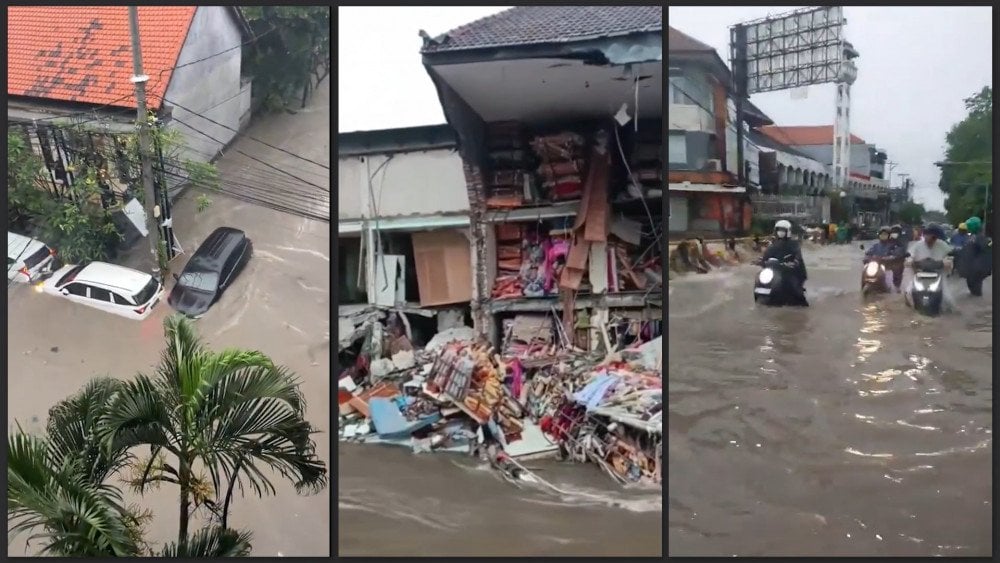
Flooded streets and destroyed buildings — the aftermath of catastrophic flooding on Bali, Indonesia
Six out of eight districts of Bali Province, as well as the capital city Denpasar, were hit by the disaster.
After torrential rains, rivers overflowed, inundating streets, residential houses, temples, and tourist areas. Access to Ngurah Rai International Airport — the key transport hub for travelers arriving in Bali — was restricted.
Landslides blocked roads and destroyed bridges.
People stranded on their way to the airport were transported by the military using boats and trucks.
In Denpasar, two buildings collapsed, and in some areas, water levels reached an adult’s waist. Hotels, banks, office centers, and even hospitals were forced to shut down.
At one market, the first floor was completely flooded, while the second was covered with a thick layer of mud.
Due to power outages, the regional hospital used generators to keep operating rooms functional.
In the Kertalangu tourist complex, water reached the ceilings, and children had to be rescued through the attics.
Popular beaches and landmarks were buried under debris. Many tourists were evacuated. Authorities declared a state of emergency on the island.
As of September 14, at least 17 people had died in the flooding, and 5 more were reported missing.
Algeria and Tunisia
On September 10, eastern Algeria and northwestern Tunisia were struck by a powerful storm. In just minutes, a calm evening turned into chaos: the sky darkened, clouds rolled in, and large hailstones pelted the ground.
In Algeria’s Tébessa Province, hail smashed windows and damaged rooftops.
Drivers were forced to stop as their windshields shattered. Four people were injured and taken to hospital.

Large hail battered Tébessa Province, Algeria
In Tunisia, El Kef and Kairouan provinces were affected: hail the size of walnuts caused significant damage to olive and fruit trees, while vehicles were also impacted.
Türkiye
In recent times, cases of sudden wind intensification have been recorded more and more often — abrupt squalls, microbursts, tornadoes, and other anomalous phenomena are becoming a constant threat to people.
Thus, on the evening of September 11, in Türkiye’s Ağrı Province, the village of Tezeren was struck by a sudden storm. Within just minutes, the sky darkened, the wind sharply intensified, tearing roofs off most houses and reducing some buildings to rubble — 80% of all structures in the village were damaged by the storm.
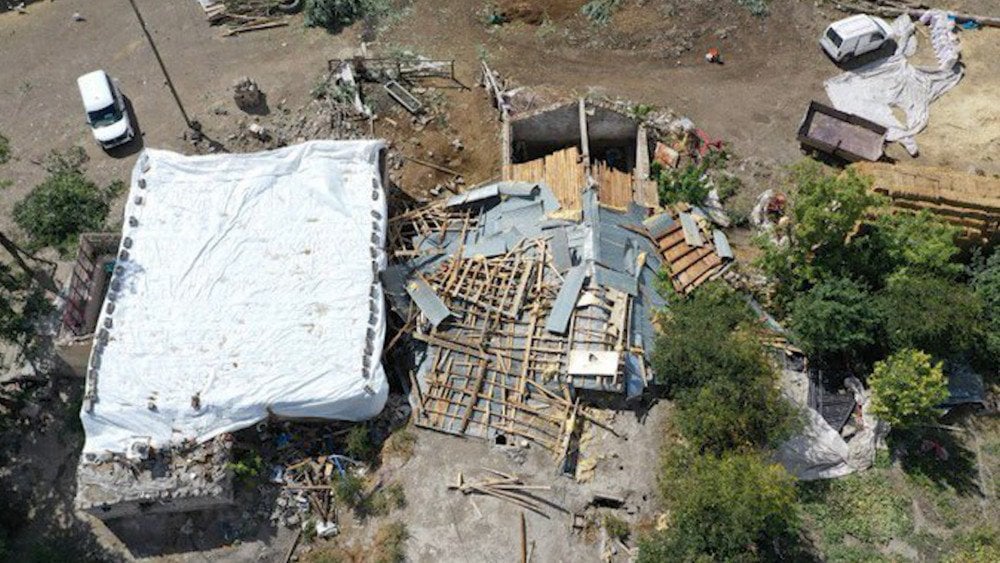
A sudden storm destroyed houses in the village of Tezeren, Ağrı Province, Turkey
Residents were left homeless and had to seek temporary shelter with relatives or neighbors.
Poland
On September 14, an incident occurred at Kraków-Balice Airport: a passenger aircraft of Enter Air was unable to stop during landing and overran the runway.
According to the airline, the cause was heavy rain: a large accumulation of water on the runway prevented normal braking and caused the plane to skid uncontrollably. Evacuation was carried out quickly, and fortunately none of the passengers or crew were seriously injured.
The blockage of the airport’s only runway completely paralyzed operations, and special equipment had to be brought in from the Czech Republic to clear it.
Colombia
On September 14, an abnormal tornado swept through the city of San Ángel in Magdalena Department.
The whirlwind struck a bullfighting arena, scattering wooden and metal structures. People fled in panic, desperately seeking shelter. Fortunately, there were no casualties.
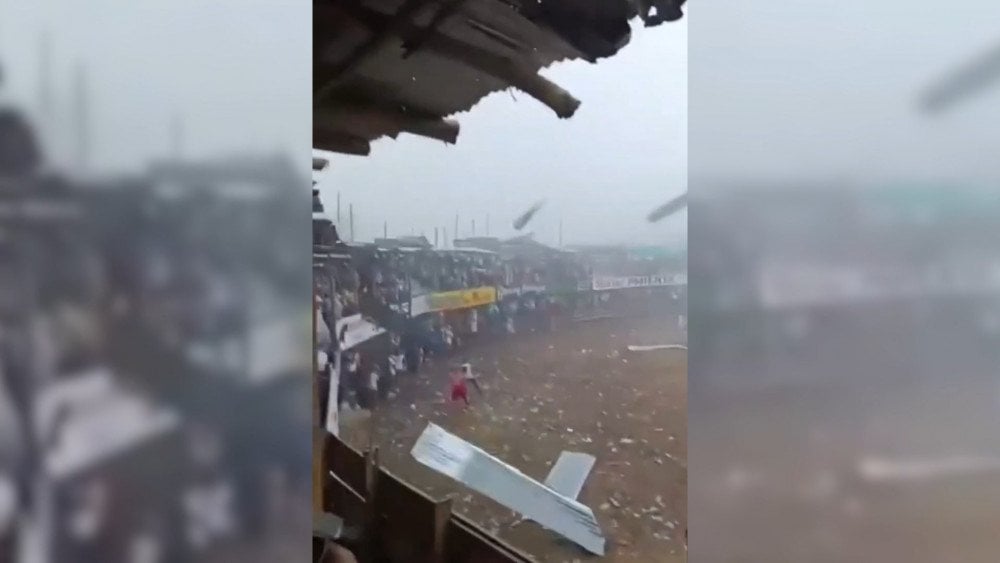
A powerful tornado in San Ángel destroyed a bullfighting arena, Magdalena Department, Colombia
It is worth noting that tornadoes were previously unheard of in Colombia — the first officially recorded case occurred only in 2001, in the city of Soledad, Atlántico Department.
Japan
On September 11, record-breaking downpours hit Tokyo and neighboring Kanagawa Prefecture, causing massive flooding and paralyzing life in the metropolis.
The rainfall intensity broke all historical records. The highest amount was recorded in Tokyo’s Meguro district, where 134 mm (5.3 in) fell in just one hour. In Setagaya and Ota districts (Haneda Airport), hourly rainfall reached the highest levels since observations began — 92 mm (3.6 in) and 88.5 mm (3.5 in), respectively.
In the Midorigaoka commercial district, water on the roads rose to 20 cm (7.9 in). An employee of one shop reported that water flooded the premises within seconds, cut electricity, and caused damage unprecedented in the store’s 50-year history. Residents of basement apartments were hit hardest: many could not open their doors due to outside water pressure, and in one flooded apartment, six children were trapped. Fortunately, they were rescued.
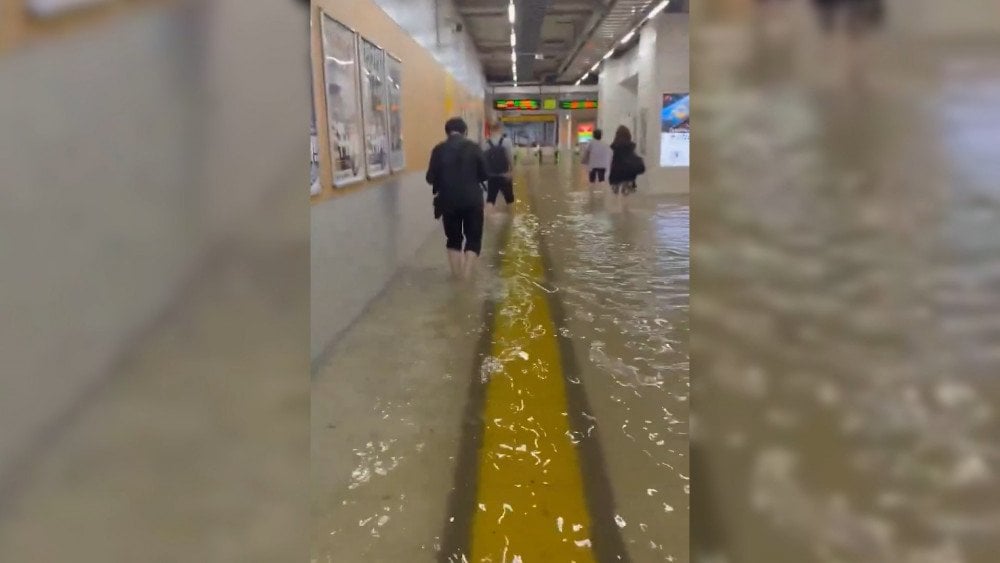
Tokyo under nature’s blow: record rainfall inundated buildings
Lightning strikes paralyzed operations at Haneda Airport, while flooding on the tracks stopped railway trains.
In Tokyo’s seaport, a sudden powerful wind gust overturned containers — one worker was killed, another injured. Meteorologists classified this squall as a microburst. Such phenomena have been occurring with increasing frequency worldwide.
China
On the evening of September 13, Beijing was struck by a powerful convective storm that swept across most of the city: strong winds, thunder, and lightning were accompanied by heavy downpours and sudden hail. The affected districts included Fangshan, Chaoyang, Shijingshan, Daxing, Tongzhou, Dongcheng, Haidian, and Xicheng.
The highest rainfall intensity was recorded in Tongzhou District, where 34.3 mm (1.35 in) fell within one hour.
In some places, hailstones the size of ping-pong balls — and even chicken eggs — rained down. Cars were left dented, and in several neighborhoods so much hail fell that it piled up like snowdrifts.

Heavy hail in Beijing blanketed streets with a thick layer of ice
Local residents said nothing like this had happened for at least 40 years.
The disaster also disrupted the transport system. Due to strong winds and rain, a tree fell onto the tracks of one of the city’s main subway lines, temporarily halting service.
This September in Beijing has been abnormally hot, which triggered the sudden convective storm — a highly unusual event for this time of year.
South Korea
The World Resources Institute classifies South Korea as a country with medium to high levels of water stress.
The paradox is that heavy rains only make the problem worse. Prolonged droughts dry out the land, and during intense rainfall, water cannot soak into the soil but instead runs off into rivers and seas, failing to replenish groundwater. As a result, the risk of flooding rises, while sudden fluctuations in reservoir levels complicate water management.
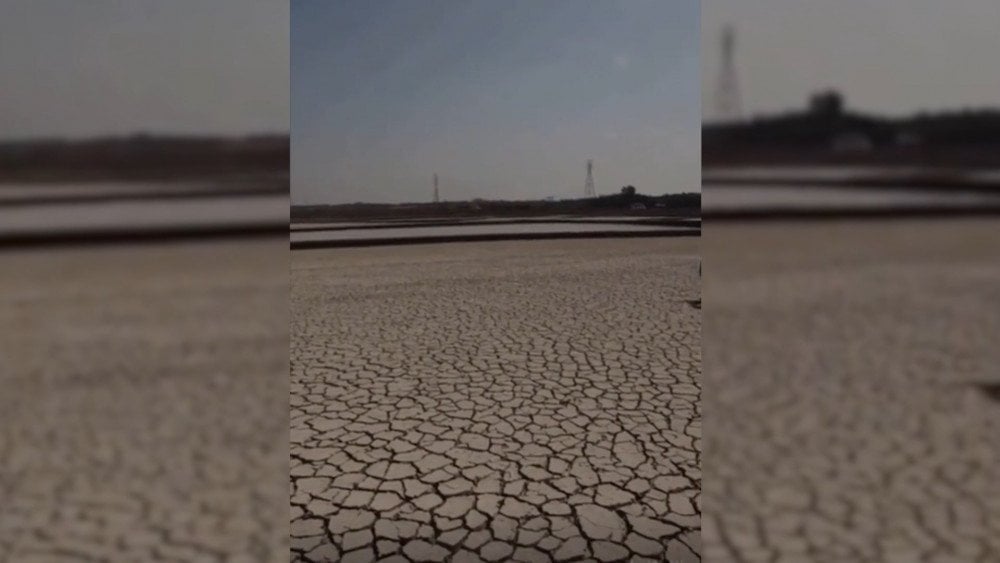
Historic drought in South Korea: soil cracked under the scorching heat
In Gangneung, a city on the eastern coast of South Korea in Gangwon Province, the worst drought in recorded history has unfolded.
On September 12, water levels in the Obong Reservoir, which supplies about 87% of the city’s needs, dropped to just 11.5% of capacity, nearly reaching the bottom — the lowest level ever recorded for the city.
Even after heavy rainfall on September 12, which brought more than 100 mm (3.9 in) of precipitation, the reservoir only rose to 16% — enough for about 10 days’ worth of supply. Authorities were forced to introduce strict water rationing: homes received water for only two hours a day — one hour in the morning and one in the evening.
A state of emergency was declared in the city — the first in the country’s history not due to fire or flood, but because of drought.
Farmers lost crops, businesses suffered, and daily life was paralyzed. Residents admitted they had never experienced anything like it: it was impossible to wash, do laundry, or take a shower. Life turned into a struggle for access to the most basic resource.
The shortage of water in Gangneung required the mobilization of 71 fire trucks and 141 military tankers from across South Korea. The situation became so severe that even the Coast Guard vessel Dokdo was dispatched to the area.
To provide for residents, 8 million bottles of drinking water were delivered to the city.
After the rainfall, water supply rationing was slightly eased to 6 hours a day, but this was only a temporary measure.
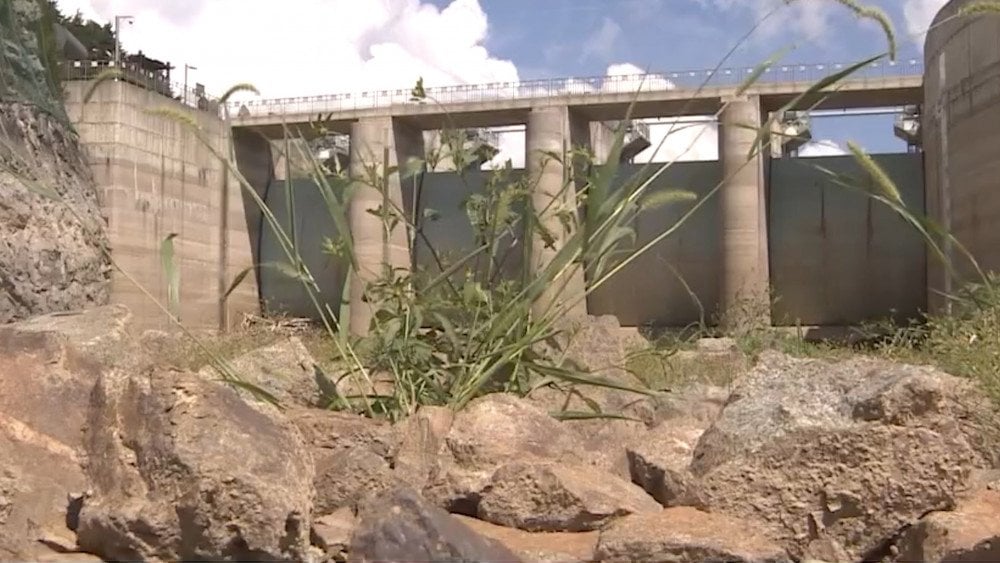
The dried-up Obong Reservoir in Gangneung: water levels fell to a historic minimum, Gangwon Province, South Korea
At its core, the problem remains unresolved: meteorologists forecast the continuation of drought, and residents live with the awareness that their water may run out at any moment.
Russia
On September 13, Kamchatka experienced a sharp surge in seismic activity. Within a single day, scientists recorded 62 earthquakes of magnitude 3.5 and above — 8 of them were felt by local residents.
The strongest quake of 7.4 magnitude struck at 14:37 off the eastern coast of the peninsula, 122 km (76 mi) from Petropavlovsk-Kamchatsky. It became one of the most powerful aftershocks of the July mega-earthquake (M8.8). The hypocenter lay at a depth of about 47 km (29 mi).
A tsunami warning was briefly issued, but no large wave followed.
For those afraid to return home, a temporary shelter in Petropavlovsk-Kamchatsky was reopened.
In the following days, powerful tremors continued with magnitudes up to 5.9.
Amid the earthquakes, volcanic activity also intensified: signs of activation were observed at Kambalny, Bezymianny, Shiveluch, Klyuchevskoy, Karymsky, and Krasheninnikov volcanoes.
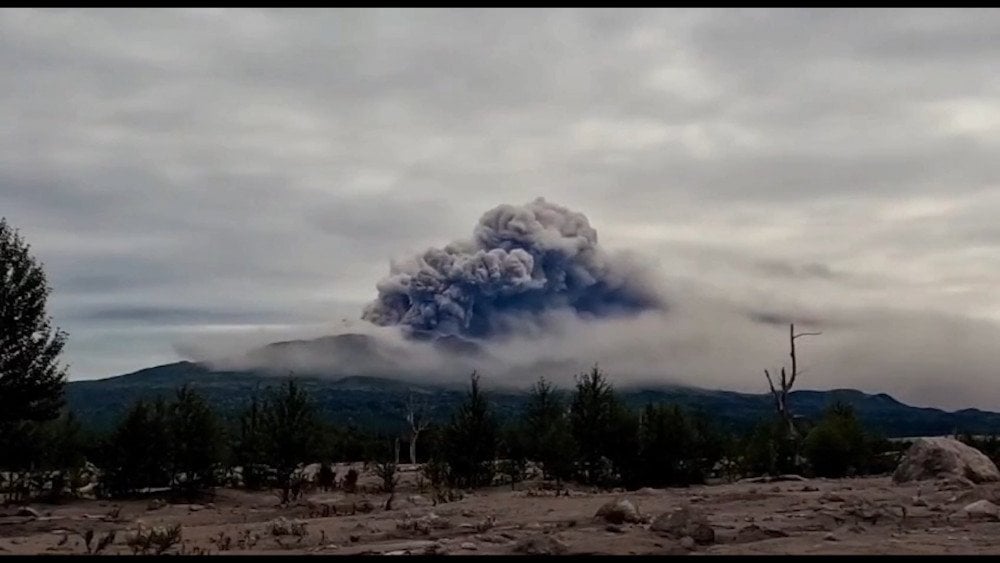
Shiveluch Volcano in Kamchatka erupted, sending ash up to 5 km (3.1 mi) high, Russia
And although seismologists believed that the M7.4 aftershock was the strongest and that seismic activity would now subside — they were mistaken. Nature delivered a new, even more powerful blow.
The morning of September 19 in Kamchatka began with panic: at 06:58 local time, an earthquake of magnitude 7.8 struck in the Pacific Ocean, about 143 km (89 mi) from Petropavlovsk-Kamchatsky. The hypocenter lay at a depth of 48 km (30 mi).
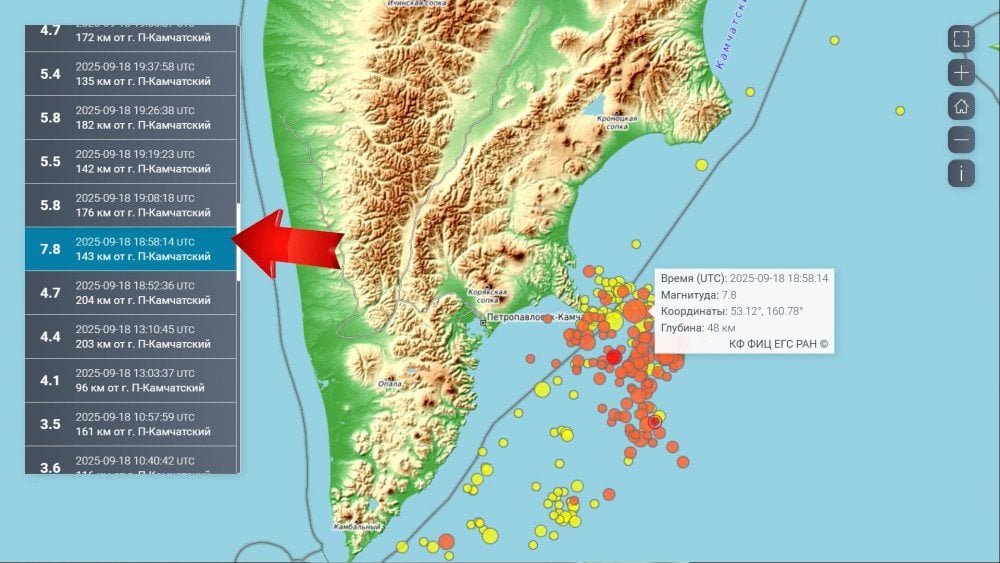
A powerful M7.8 earthquake struck in the Pacific Ocean near the Kamchatka Peninsula
Eyewitnesses reported that buildings shook violently, plaster crumbled, and tiles cracked. People rushed outside in their home clothes.
Cracks appeared in some houses in Petropavlovsk-Kamchatsky; at Yelizovo Airport, people hid near columns, fearing collapses. Several flights were canceled and delayed due to the tremors.
Over the next 24 hours, more than 50 aftershocks of magnitude 3.5 and above were recorded in the region, with more than half exceeding magnitude 5.0.
According to the director of the Unified Geophysical Service of the Russian Academy of Sciences, the situation does not fit into any known scientific models describing aftershock propagation.
However, what is happening in Kamchatka is part of a natural process of a much larger scale, which clearly confirms the scientific model developed by researchers of ALLATRA International Movement.
This is not just about growing tension between two tectonic plates, but about the impact of the colossal Siberian magma plume — a scorching stream of magma whose zone of influence is comparable to the size of Australia. The plume’s pressure extends far beyond Siberia and can trigger powerful earthquakes thousands of kilometers away.
This process can be compared to the action of a giant hydraulic piston: magma pushes upward against the lithosphere. But the Siberian platform is an ancient, rigid, and monolithic structure — it does not bend or break in the middle, but instead transfers the stress toward the edges of the Eurasian Plate. There, in the collision zones with other plates, the stress accumulates and manifests as so-called edge effects.
In other words, the influence of the plume does not appear as sudden local deformations of the Earth’s crust, but rather as a slow, uniform uplift of the entire Siberian block, which includes the West Siberian Plate, the East Siberian Craton, and the Verkhoyansk–Chukotka Fold System.
It is precisely this large-scale but relatively slow process that generates colossal stress along the edges of the continental block — where the most intense geodynamic processes occur.
That is why the series of powerful earthquakes in Kamchatka is not a true release, but merely a temporary venting of pressure through one of the “valves.” The system as a whole continues to accumulate stress, which signals the onset of a new, more intense phase of geodynamic changes on the planet.
And now humanity must choose: to continue down the familiar road of complacency, denial, and ignoring the facts — or to take the path of accepting the uncomfortable truth and acting in immediate, coordinated ways.
The choice lies with each of us!
You can watch the video version of this article here:
Leave a comment